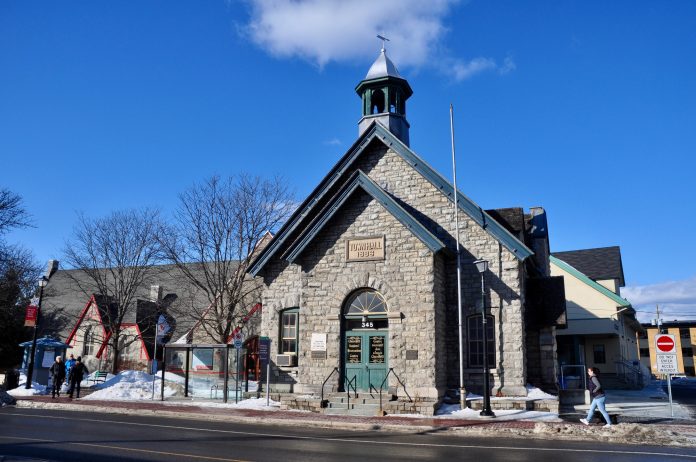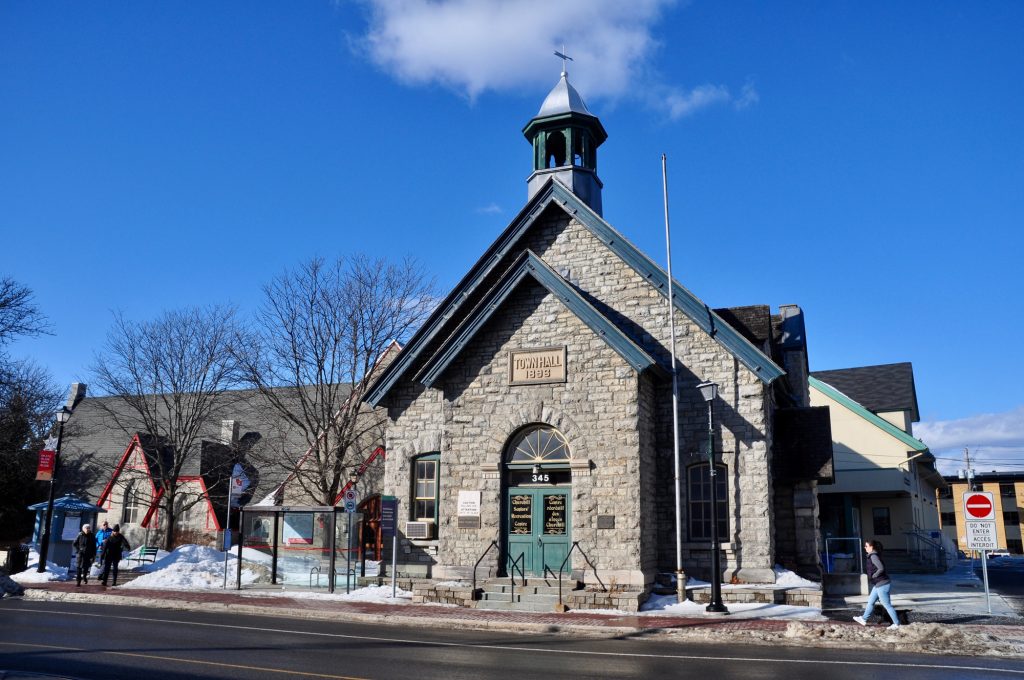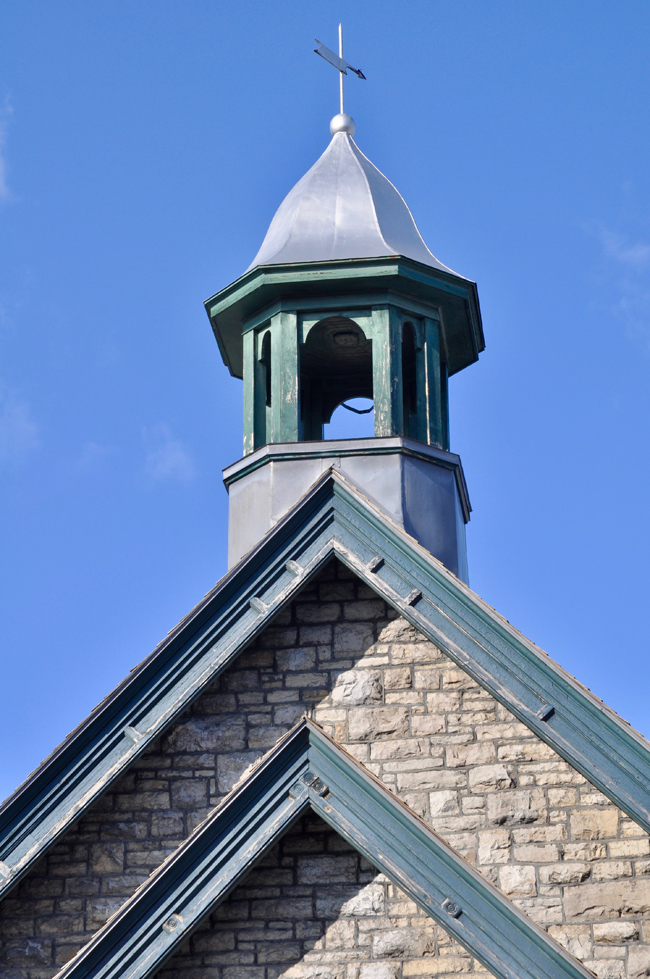By Dave Allston –
Westboro has not been whole for over fifty years. An important piece of the village’s history was stolen away in the dark of the night and residents have never successfully reclaimed what is rightfully theirs.
The former Nepean Town Hall stands proudly on Richmond Road near Churchill Avenue. It’s one of the few remaining vestiges of Westboro’s historic streetscape; a heritage stone building at the geographic centre of much development and change.
Intended to replace the town hall on Parkdale Avenue, it was built in 1896 by renowned local architect, Moses C. Edey, after Hintonburg became independent from Nepean. At the time, Westboro was still a small hamlet. In fact, it wasn’t even “Westboro” then. That name would come three years later.
As detailed in my Early Days column in December, fire-fighting services in Westboro had its earliest beginnings with the establishment of a fire brigade in 1913. The brigade developed slowly and gradually acquired equipment and tools. In 1916 it became obvious that an alarm system was needed to alert volunteer fire fighters.
At the February 1, 1916 meeting of Westboro Village Council, four members of the brigade made a formal presentation requesting council to purchase a “motor chemical engine” for fighting fires and install a bell atop the town hall. Secretary C.W. Ross agreed to make the request to Nepean Township council (which he did, successfully, on April 20). In anticipation of approval, Westboro Council researched various types of bells and their prices. Stinson & Cummings hardware store on Richmond Road presented options and at the April 4 meeting of Westboro council, “it was decided to purchase one of about 1,000 lbs.” Unfortunately, none of the official records indicate its cost.
On June 27, council approved the tender of William J. Hamilton, a 40-year-old Westboro-based insurance agent and contractor to erect the belfry and install the bell for $175. The work was completed by early July.
The bell was used to summon the fire brigade when needed. A long rope attached to the bell hung down the front of the town hall. It was not long enough to be pulled from the ground, but could be reached from a window. According to Bob Grainger in his book Early Days of Westboro Beach: “The fire alarm rope was always a tempting target for young men interested in a practical joke. Sid Goldenberg told of a time when he and a couple of friends succeeded in fastening a length of wire to the bell-rope and proceeded to ring the fire alarm to summon the firemen.”
Later, the bell was used for special civic occasions, and most notably, to announce the 9 p.m. curfew for children under 16 beginning in 1937. Curfews were commonplace and took on additional significance during wartime. Jerry Cooke was the legendary long-time Westboro Constable and truancy officer whom the local children feared, particularly after he rang in curfew.
The Westboro Theatre was a popular spot for local teens during this era. Ron Statham remembered the sense of dread at the sound of the curfew bell, and recounted that for evening movies: “If you were under age you could not attend unless accompanied by an adult. Problem solved by asking strangers to buy your ticket for 18 cents and everyone then looked the other way, the law being satisfied. But if it was after 9 p.m. when the show finished, you really, really ran like hell to get home and avoided Churchill Avenue so as not to run by the police station.”
After WWII, the city relaxed the curfew and the bell fell silent for many years.
The bell and belfry miraculously survived a massive fire that destroyed the town hall in March 1943. Firefighters worked hard to save the bell for fear that it would crash down on top of them.
In 1950, Ottawa annexed 7,420 acres of what was almost Nepean Townships’ entire urban sector, including Westboro, and Nepean’s town hall was suddenly marooned.
By January 1963, Nepean tired of having their municipal offices in Westboro and voted unanimously to build a new town hall in Bells Corners and sell the old one. Interest arose in the bell and Nepean officials decided it would not be sold with the building. Representatives of All Saints Church pleaded to Nepean Council for the bell to move to the church. At one point it appears Nepean was accepting bids on the bell, though it was never sold.
In November 1964, following Mayor Charlotte Whitton’s push for historical preservation, the City of Ottawa decided to purchase the Nepean town hall for $40,000 with the intent of establishing a senior’s recreation centre. Ottawa expected the bell to remain as part of the sale, however, the two municipalities battled over the transfer for years. Former Ottawa Citizen columnist Ken Gray, in speaking with Aubrey Moodie in 1998, revealed how Nepean conspired to remove the bell on their own, after growing frustrated with Ottawa. Late one night in the summer of 1966, a Nepean crew put into action a well-planned mission to remove the bell from the hall. Moodie declined to refer to it as a theft and instead, described the action as a “way to recover money rightfully owed Nepean.”
When Nepean’s new $700,000 town hall opened in November 1966, the old bell was installed on a custom-made tripod outside the new hall. The bell and tripod were later selected as Nepean’s official logo in 1980 when Nepean unveiled its official city flag. They moved to Ben Franklin Place in 1988.
Since the 1970s, many in Westboro who see the bell as a symbol of Westboro’s heritage (more so than Nepean’s) have contemplated lawsuits, purchases, trades, or even stealing it back. Some have even considered installing a replica or digital bell system, since the original bell is reputedly built from “inferior cast iron,” has a crack, and doesn’t ring all that well. One study showed it was now too heavy for the belfry. Attempts to bring back the bell in 1998 as a millennium project and again in 2017 for Canada 150 were unsuccessful.
Nepean politicians, meanwhile, have steadfastly fought against Westboro reclaiming the bell, with Jan Harder and Rick Chiarelli most vocally opposed to it. Westboro was able to borrow it briefly in 2005 for the 100th anniversary but Nepean officials kept a close eye. “There is no way Nepean should expose its heart and soul by allowing it to be moved to Westboro for any length of time. The risks of never seeing that bell in Nepean again are just too great,” said Harder.
Perhaps we will never see the original bell in Westboro again, but it would be incredible to see something installed in that sad empty belfry and to hear the bell sound throughout Westboro as it did for so many years. The Westboro Beach and Westboro Community Associations have been actively pursuing options. Let’s hope a solution can be found soon.
Dave Allston is a local historian and the author of a blog called The Kitchissippi Museum. His family has lived in Kitchissippi for six generations. Do you have early memories of the area or of the old bell?We’d love to hear them! Send your email to stories@kitchissippi.com or leave your comment below.


